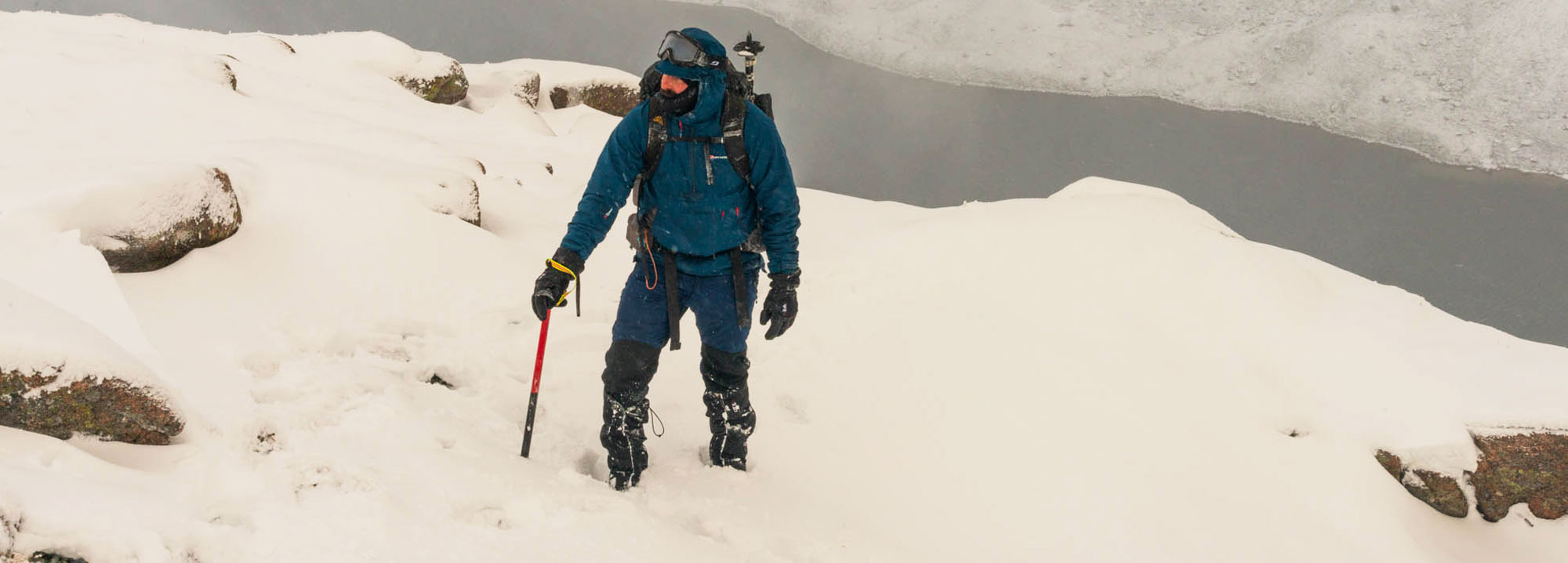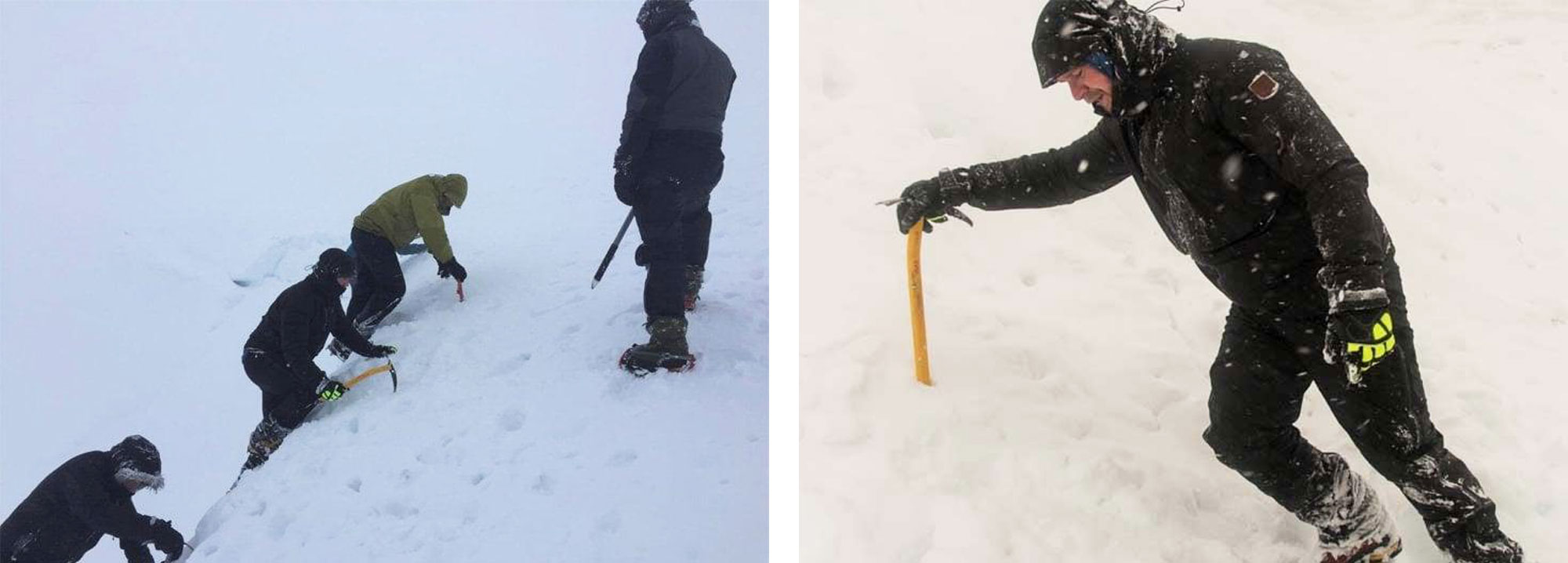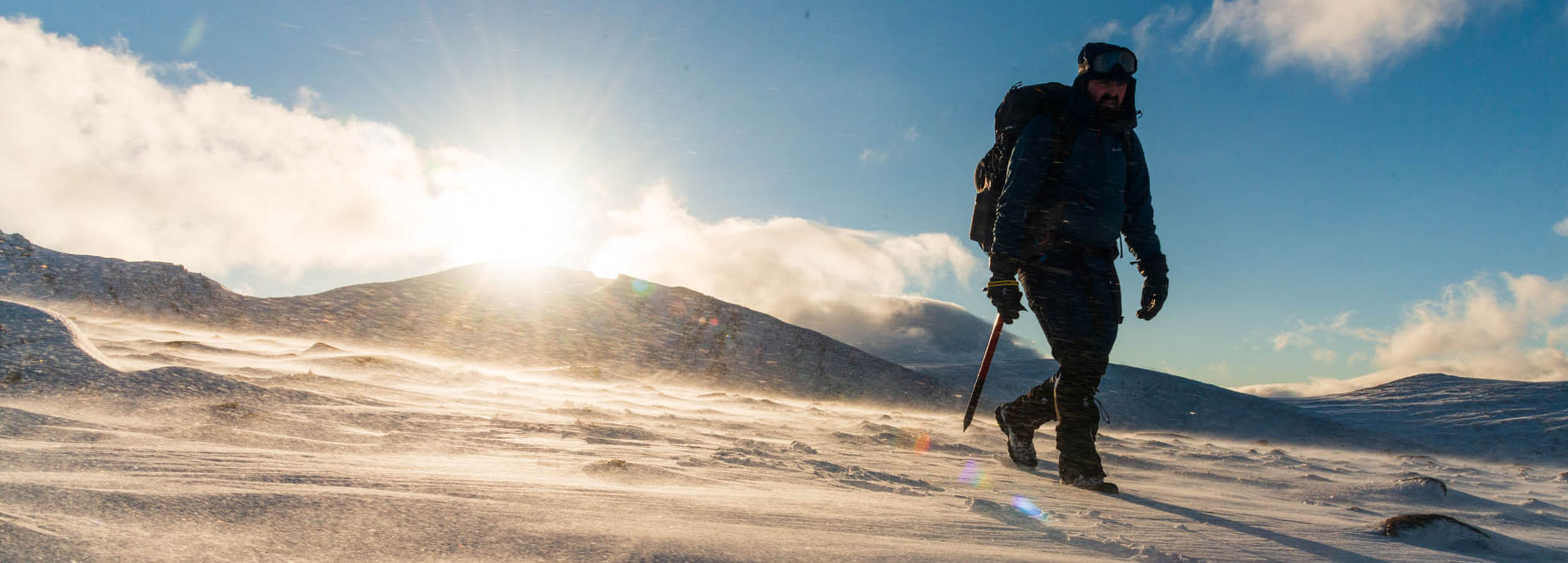Knowledgebase Page - A Beginners Guide to Ice Axes
May 24, 2022

The intention of this page is simply to provide guidance and advice to those with limited winter mountaineering experience. It is not definitive piece and is based solely on our experiences in the mountains. The aim is to simply help customers understand differences and focus on what they might need from the options available when considering buying an ice axe. We hope to provide some general advice on ice axe use too. Technical climbing axes designed to be used as pairs are not stocked by UOG and are beyond the remit of this article.
I’ll start with a brief overview of my experience. I have been venturing out into the mountains in winter for over 12 years. I started with a week’s winter walking course in the Cairngorms and have built up my experience from there. My initial focus was seeking out technical roped climbs mostly in Scotland and Wales with a couple of Alpine cascade ice trips as well. These days I favour less technical, though still interesting terrain for the majority of my trips. Classic ridge days such as the Snowdon horseshoe or Striding and Swirral Edge on Helvellyn are what I enjoy most. I have no ski touring experience so this is not something I will cover.
In brief, I make no claims to be an expert winter mountaineer but feel I have sufficient days out on the hill to impart so knowledge to those keen on venturing out in winter for the first time.
Choosing an Ice Axe
When choosing which Ice Axe to buy your starting point should be what your intended use is for the axe, the needs of a ski mountaineer are different to classic winter Munro bagging. It is perhaps best to split the axe into its component parts and discuss the options within.
The Pick
This is generally constructed of steel or aluminium. Steel is heavier and more durable whilst aluminium is lighter. Climbing on mixed terrain will trash an aluminium pick much quicker than a steel pick.
Pick angle: The more the pick is curved the better purchase you get when swinging into snow and ice. The straighter the angle the easier it is to ice axe arrest. Most of the axes we stock have a very modest pick angle as we don’t sell technical climbing axes.
The spike
With our lighter axes the bottom of the shaft is formed into a point instead of an integrated spike made form a tougher material (eg, steel) than the shaft. I haven’t used an axe with a shaft point myself but can’t see them being as effective as a proper spike. Another advantage of an integrated spike is they typically have a hole you can attach a carabiner to. This can be used to attach leashes or belay from in extremis. I would be very wary of an aluminium shaft spike unless you’re only ever out on softer snow.
The shaft
Same as the pick the shaft is generally constructed of steel or aluminium. Steel is heavier and more durable whilst aluminium is lighter. There is a rating system for shafts (and picks). A Basic (B) means it has been tested to 280kg. A Technical (T) Rated shaft is stronger still, tested to 400kg so it can withstand serious climbing abuse and therefore is generally beyond the remit of the axes we sell. The same rating system is used on picks.
Shaft shape: Some of our axes have a slight bend in the shaft, this gives greater clearance when swinging the axe and reduces the chance of bashing your knuckles when swinging into steeper terrain.They also help keep your hands out of the snow when daggering (Hand gripping shaft just below the pick) Most of our axes have straight shafts, a few have a slight curve.There are disadvantages to radically curved shafts such as less effective plunging and less secure T Axe belays but we don’t sell that style of axe.
Shaft Grip: Some of our axes have some form of grip or molding at the bottom of the axe to aid grip when swinging axes. None of the axes have any handle like you can find on technical axes with the exception of The Petzl Gully Ice axe which has an adjustable trigger rest. Handles on the bottom of shaft greatly compromise your ability to plunge the ice axe into snow.
Shaft length
A shorter axe is lighter and better for swinging than a longer axe. I was told on my winter skills course its easier to ice axe arrest with a shorter one, I’m not convinced ice axe length is a hugely significant factor in ease of ice axe arrest.
The advantage of a longer axe is being able to use it similarly to a walking pole giving you greater support and stability. For general winter walking I certainly recommend a longer axe. I miss the extra length of my walking axe on moderate terrain when I’m using shorter technical axes.
When it comes to choosing ice axe length the general rule of thumb is if you are holding your axe in piolet mode (with arms hanging down) the spike should be just above your ankle at the most.

Leashes
Some of our axes come with leashes, otherwise, they can be bought separately.
There are 2 types:
- Traditional wrist leashes are as you would expect, where the axe is attached to your wrist. I see no value at all in this when using a single axe. It’s best practice to always have your axe in your uphill hand so for example when zig zagging up a steep slope you are constantly changing hands which is not possible with a wrist loop.
- The other type of leash is a bungee type cord you can attach to your rucksack or harness. I use these when using 2 axes on technical climbs. However, I see little value in these for single axe use. The only advantage of having a leash is not losing your axe if you drop it but I have never felt close to dropping an axe on single axe terrain. The cord is something that can snag on things and in the worst case scenario with an out of control slide and dropped ice axe I don’t want a sharp thing bouncing around me as well, I’d rather the axe was sliding on its own.
Ice axes and walking poles: Knowing when to put away your poles and use your ice axe is not a precise science and experience is your best guide. If I’m on soft or gently angled snow then I’m perfectly happy with poles. A great rule of thumb is if you have your crampons on then have your axe in hand. For me, as soon as the snow is hard, when you need to kick steps in for example, I will have crampons and axe out.
Using walking poles and your axe: This is something I have never done and I regard as a technique for advanced mountaineers only. Having both walking pole and axe in hand might seem like the best of worlds with the extra support of a walking pole and the axe for purchase on snow/ice but in reality I think you need a high degree of competence to manage both effectively. Successfully stopping a slide with an ice arrest is hard enough at the best of times without the added complication of walking pole in hand. I appreciate the theory of the walking pole potentially reducing the chance of a fall and an ice axe arrest a last resort action but my advice is to either have ice axe out or poles, not both.
It is hypothetically possible to stop a slide with a walking pole but I have witnessed 2 people fail to do so descending Ben Nevis on terrain I wouldn’t consider taking on without using my axe (20-40 degree sleep on hard neve).
In Summary
Going back to choosing an ice axe to suit your activity, if you’re carrying an axe for ‘just-in-case’ scenarios, such as crevasse rescue, and most of the time it will on your rucksack not in your hands then clearly going for the lightest is the way forward.
If your aim is winter walking, avoiding more technical steep routes where possible, then I would personally recommend a longer, straight shafted axe. As you are unlikely to be swinging the axe there is no need for some kind of grip on the bottom of the handle or a more curved pick. You can still go for a light axe.
If, like me, you go out seeking more technical terrain such as classic grade 1 gullies and ridges, then a heavier more durable axe makes sense. With a heavier axe you don’t have to swing as hard to get good purchase in ice. As you are more likely to be bashing the axe against rocks as you climb through mixed terrain a durable axe will obviously last you longer. A slightly curved shaft and pick will help on steeper terrain. Ice axe length choice become more contentious, I would still favour a longer axe but if you are constantly on steeper terrain a shorter axe is easier to manage and is easier to then pair up with a more technical axe if you wish to push on to steeper terrain in the future.
Winter mountaineering is a hugely enjoyable activity but the risks are considerably greater than in the summer. It’s always best to take your axe and crampons just in case and not need them than leave them behind to save weight then wish you had them.

